

- © 2003 - 2025 Dynamix Productions, Inc. Contact Us 0


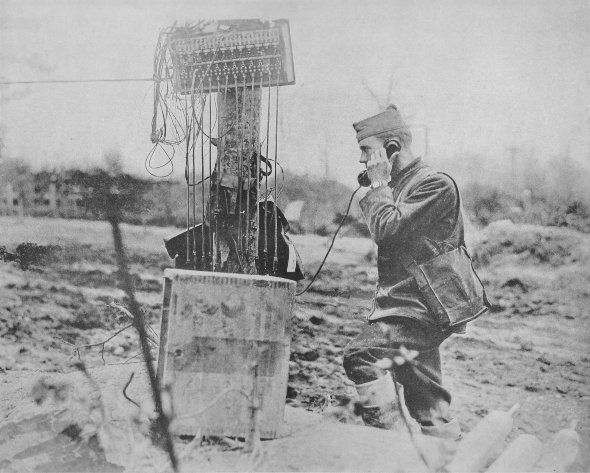
"Hostilities will cease along the whole front from 11 November at 11 o'clock."
Marshal Foch, the French commander of the Allied forces via radio atop the Eiffel Tower.
This week marks 100 years since the end of the war to end all wars, known today as World War One. In 1918, on the 11th hour, on the 11th day of the 11th month, 1,500 days of fighting came to an end. The armistice was agreed upon just six hours earlier in a railway car halfway between Paris and the Western Front. What's remarkable is the speed at which most troops were informed of the impending armistice. This war, like in so many other ways, forever changed the world of communication.
Older, established methods of communications such as semaphore, flags, signal lamps, pigeons, and dogs were used throughout the war. But electronic communications, especially radio, rapidly advanced from wagon loads of equipment to merely bulky gear by war's end. Wired telephony and telegraph were still the primary communications devices, but there were major advances in those as well.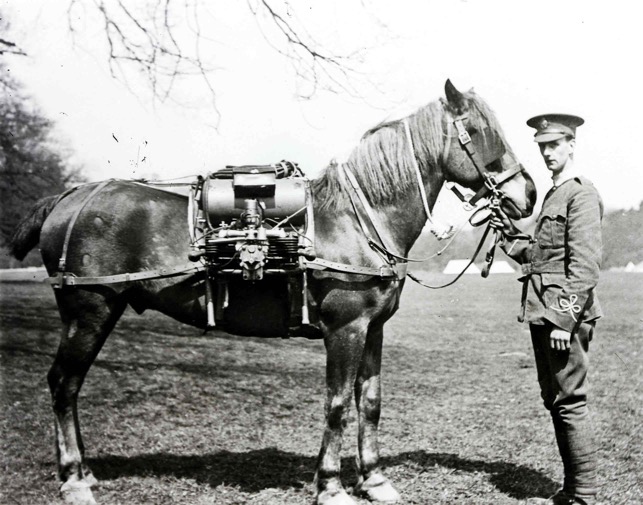
Some inventions that sped up the miniaturization of radios included the valve (vacuum tube), amplifier, and the superheterodyne receiver (a more precise way to tune in distant frequencies). As radios grew smaller, they moved around with the troops on the ground, went to sea, and took to the air. Transmitters were placed in dirigibles and airplanes for pilots to relay back battle conditions. By the end of the war two-way communications between airplanes and the ground, and from pilot-to-pilot was possible. To give pilots freedom, and to reduce the sound of the airplane's engines, a cap with a throat microphone and earpiece was developed. This was the world's first hands-free device. To control chaos at busy military airstrips, the British developed the earliest air traffic control.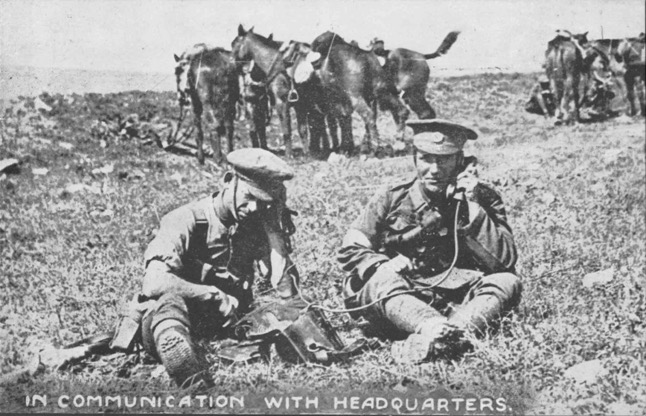
But most ground communications was through wires. Many, many men lost their lives running cable in battle zones. The lines were often severed during bombings, requiring deeper trenches to bury them. Ladder-type runs were also employed to ensure that if one strand were broken, the other parallel strand would carry the signal. And early on many of these signals were intercepted by the enemy through induction from the electromagnetic field. Thus, insulation was invented to shield orders from enemy ears. Enemies could also tap in to lines to pick up morse code transmissions, so the fullerphone, a quasi-encryption device, was employed. This electronically changed the way morse code signals were relayed and required special equipment on each end.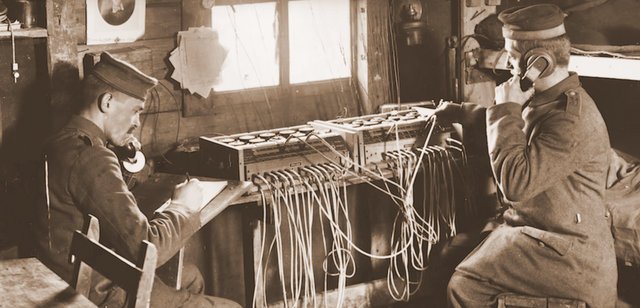
Voice transmission was quicker than morse code, but noisy lines and battle sounds tended to obscure the messages. A phonetic alphabet was perfected to aid in distinguishing letters. For instance, my name Neil would be spelled "November Echo India Lima" in the current alphabet. It changed many times over the years and varied between countries and military branches until it was standardized in 1957. That's probably good. During WWI my name would be phonetically spelled "Nan Easy Item Love." Sounds more like a proposition than military communication.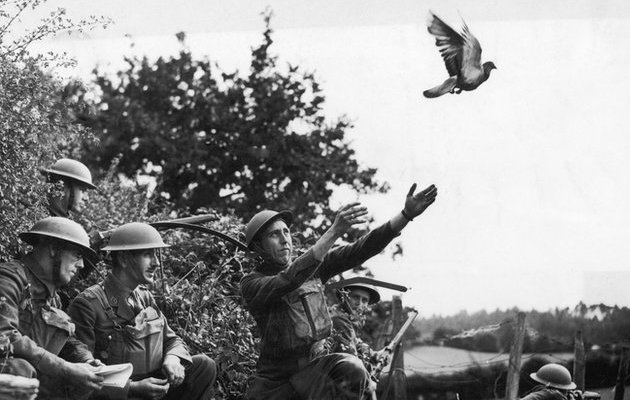
The advanced communications developments weren't enough to prevent catastrophes, however. The famous "Lost Battalion" had to rely on their last carrier pigeon to stop friendly fire on their position. Cher Ami, shot down by German troops, returned to flight and delivered the desperate message to headquarters that pleaded "For heavens sake stop it." Cher Ami would be saved by Army medics despite being shot through the breast, blinded in one eye, and losing a leg. She was awarded many honors and is on display at the Smithsonian Institution.
As with most prolonged wars, technology advances at meteoric speeds, often benefiting civilization during peace time. Some inventions and improvements that came out of WWI that trickled into everyday use include the wristwatch, the compact camera, drones, zippers, stainless steel, plastic surgery, the sun lamp, and portable x-ray machines.
A hundred years seems so far off when you think about how far technology has advanced since then. But a lot of us have a direct connection to it. My grandpa fought in the last major battle alongside 1.2 million other doughboys in the Meuse-Argonne Offensive - just a month before the armistice. He was badly injured and disabled by bullets, shrapnel, and gas. A day earlier in a nearby forest, American hero Sergeant Alvin York singlehandedly killed or captured an entire German machine gun battalion. Since this Veterans Day marks the end of World War One, let's salute the soldiers who put their lives on the line running cable, hoisting giant antennas, lugging heavy equipment into battle zones, flying in airplanes and dirigibles to radio back information, and crawling through battlefields to telegraph enemy positions. And let's not forget the pigeons, dogs, and horses that continued a long tradition of carrying battle communiques and equipment in hellish conditions.
More information on technology and communications in World War One
First World War communications and the tele-net of things.
A history of first World War technology in 11 objects
Telecommunications in war
The science of World War I communications
Northern Ireland, the first to hear of the armistice via radio from Paris
A PDF of WWI military communications from the US Marine Corps Museum
The final hours of World War I